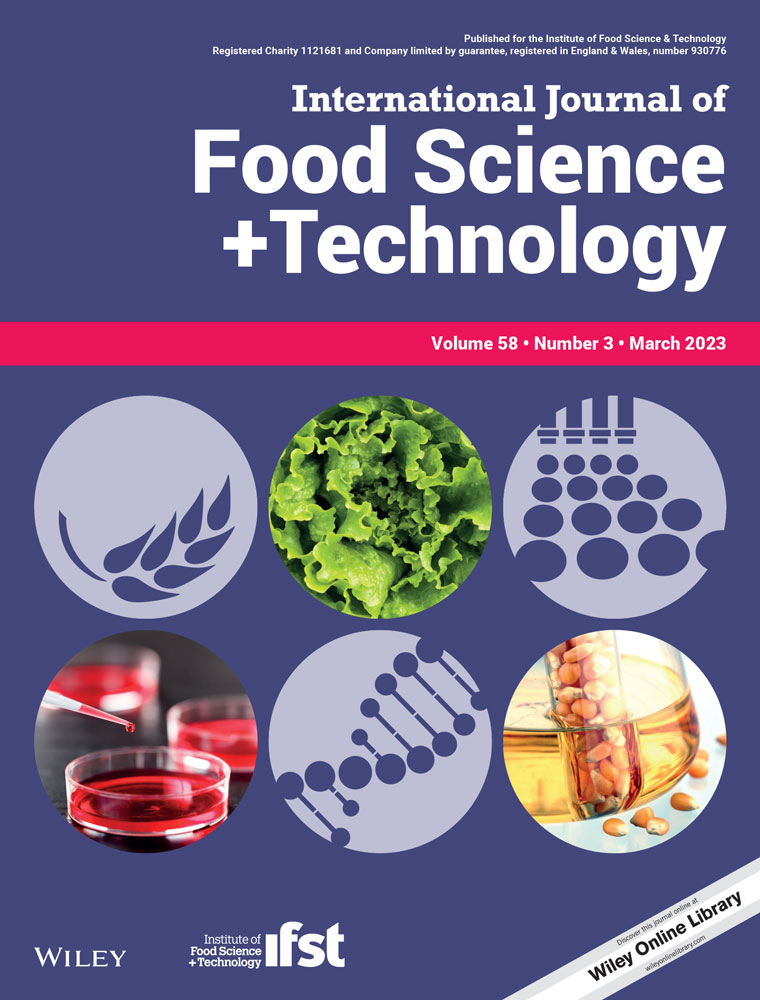View Item
- xmlui.general.dspace_homeCentros e Institutos de InvestigaciónCIA. Centro de Investigaciones de AgroindustriaInstituto de Tecnología de AlimentosArtículos científicosxmlui.ArtifactBrowser.ItemViewer.trail
- DSpace Home
- Centros e Institutos de Investigación
- CIA. Centro de Investigaciones de Agroindustria
- Instituto de Tecnología de Alimentos
- Artículos científicos
- View Item
Effect of in-package cold plasma treatments on the quality of minimally processed apples
Abstract
Cold plasma technology is being increasingly used for food preservation and, incipiently, for minimal processing of fruit. Therefore, the objective of this work was to study the effect of in-package cold plasma (generated in atmospheric-pressure air by a low-frequency −50 Hz-dielectric barrier discharge operating at 30 kV) on the quality of minimally processed apples during refrigerated storage. Apple slices were subjected to the different treatments
[ver mas...]
Cold plasma technology is being increasingly used for food preservation and, incipiently, for minimal processing of fruit. Therefore, the objective of this work was to study the effect of in-package cold plasma (generated in atmospheric-pressure air by a low-frequency −50 Hz-dielectric barrier discharge operating at 30 kV) on the quality of minimally processed apples during refrigerated storage. Apple slices were subjected to the different treatments following a completely randomised design with a 3 × 3 factorial arrangement. The independent variables were the exposure time (0, 1 and 3 min) and the storage times (1, 4 and 7 days). Cold plasma treatments preserved the quality of the fruit, maintaining the tissue structure. Plasma treatment applied for 1 min rendered apple slices with the highest antioxidant content but only at day 1. Even though polyphenoloxidase activity was reduced by the treatment, it was not sufficient to stabilise the antioxidant content during storage.
//Resumen: La tecnología de plasma frío se utiliza cada vez más para la conservación de alimentos y, de forma incipiente, para un procesamiento mínimo de la fruta. Por lo tanto, el objetivo de este trabajo fue estudiar el efecto del plasma frío en paquete (generado en aire a presión atmosférica por una descarga de barrera dieléctrica de baja frecuencia −50 Hz operando a 30 kV) sobre la calidad de manzanas mínimamente procesadas durante almacenamiento refrigerado. Las rodajas de manzana se sometieron a los diferentes tratamientos siguiendo un diseño completamente al azar con arreglo factorial 3 × 3. Las variables independientes fueron el tiempo de exposición (0, 1 y 3 min) y los tiempos de almacenamiento (1, 4 y 7 días). Los tratamientos con plasma frío preservaron la calidad del fruto, manteniendo la estructura del tejido. El tratamiento con plasma se aplicó durante 1 min en rodajas de manzana procesadas con el mayor contenido de antioxidantes, pero solo en el día 1. Aunque la actividad de la polifenoloxidasa se redujo por el tratamiento, no fue suficiente para estabilizar el contenido de antioxidantes durante el almacenamiento.
[Cerrar]

Author
Denoya, Gabriela Inés;
Polenta, Gustavo Alberto;
Apóstolo, Nancy Mariel;
Cejas, Ezequiel;
Fina, Brenda Lorena;
Chamorro Garcés, Juan Camilo;
Ferreyra, Matías Germán;
Prevosto, Leandro;
Vaudagna, Sergio Ramon;
Fuente
International Journal of Food Science and Technology : 1365262 (February 2023)
Date
2023-02-28
ISSN
1365-2621 (online)
Documentos Relacionados
Formato
pdf
Tipo de documento
artículo
Proyectos
(ver más)
INTA/2019-PD-E7-I153-001/2019-PD-E7-I153-001/AR./Estrategias tecnológicas innovadoras para la transformación y preservación de alimentos
Palabras Claves
Derechos de acceso
Restringido
 Excepto donde se diga explicitamente, este item se publica bajo la siguiente descripción: Creative Commons Attribution-NonCommercial-ShareAlike 2.5 Unported (CC BY-NC-SA 2.5)
Excepto donde se diga explicitamente, este item se publica bajo la siguiente descripción: Creative Commons Attribution-NonCommercial-ShareAlike 2.5 Unported (CC BY-NC-SA 2.5)


